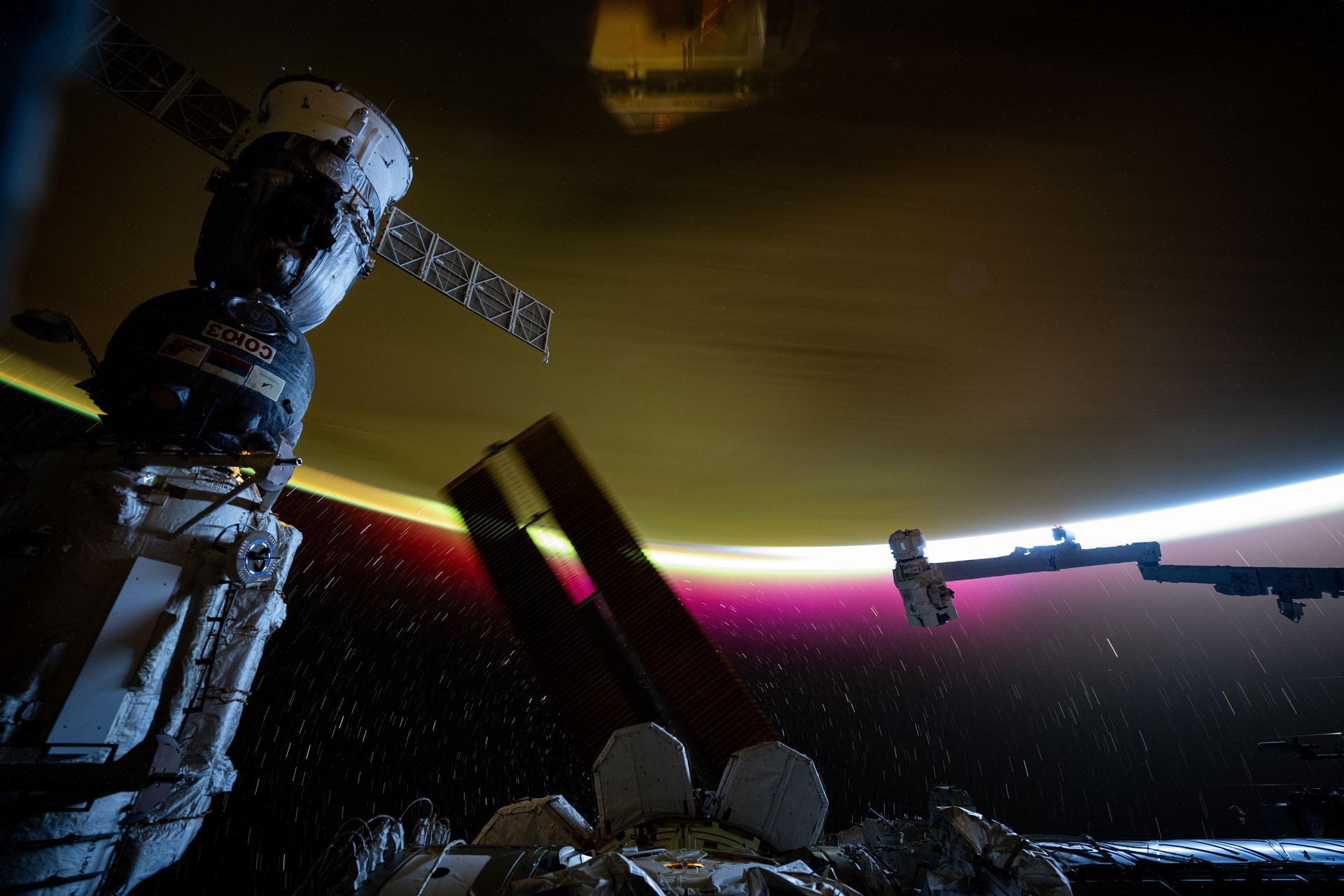
The Expedition 72 crew began the week exploring what happens to a crew member’s eyes after living in space for months or years at a time. The International Space Station residents also kept up a host of other microgravity research, continued servicing spacesuits, and prepared for the departure of three crewmates.
Astronauts on future missions to the Moon or Mars will experience increased risk to their vision and eye structure due to longer periods of exposure to microgravity. The CIPHER study, composed of 14 human research investigations, looks at the physical and psychological health of astronauts living in space and applies the knowledge to keep crews healthy on long term missions farther away from Earth.
One portion of the CIPHER investigation seeks to identify how much a crew member’s brain and eye structure changes the longer they stay in space. NASA Flight Engineer Anne McClain led that study today peering into the eyes of NASA Flight Engineer Jonny Kim. She first measured how his retinas respond to light activity using electrodes and eye drops. Next, she took a closer look at his retina, optic nerve, and cornea using medical imaging hardware. Scientists will use the insights gained from the research data to understand how the human body adapts to spaceflight and provide countermeasures.
Earlier, McClain partnered with Flight Engineers Nichole Ayers of NASA and Takuya Onishi of JAXA (Japan Aerospace Exploration Agency) and worked on a variety of spacesuit hardware. McClain and Onishi first checked out the functionality of controllers that display the operational status of a spacesuit during a spacewalk. Next, Onishi joined Ayers and organized spacewalking tools inside the Quest airlock where spacewalks in U.S. spacesuits are staged.
Kim studied procedures to monitor a SpaceX Dragon cargo spacecraft as it approaches the orbital outpost for a docking. Kim then reviewed the various approach and rendezvous scenarios Dragon may encounter during its upcoming mission this month to deliver several thousand pounds of science and supplies to the crew.
NASA Flight Engineer Don Pettit is nearing the end of his mission with station Commander Alexey Ovchinin and Flight Engineer Ivan Vagner of Roscosmos. The trio will undock aboard the Soyuz MS-26 spacecraft at 5:57 p.m. EDT on Saturday, April 19, and land in Kazakhstan about 9:20 p.m. (6:20 a.m. on Sunday, May 20, Kazakh time) ending the Expedition 72 mission. Ovchinin and Vagner prepared for the end of their mission by testing the lower body negative pressure suit that may help them adjust quicker to Earth’s gravity. Pettit packed his personal belongings for the ride back to Earth and found time to disassemble, service, and stow a variety of space physics hardware onboard the orbiting lab.
Roscosmos cosmonauts Sergey Ryzhikov and Alexey Zubritsky who, along with Kim, are in their second week in space, continued studying how their circulatory system is adjusting to microgravity. Once again, the duo attached sensors to their foreheads, fingers, and toes measuring how blood flows back and forth from the head to the limbs in space. Flight Engineer Kirill Peskov assisted Ovchinin and Vagner as they tested the lower body negative pressure suit then cleaned and disinfected the Nauka science module.
Learn more about station activities by following the space station blog, @space_station and @ISS_Research on X, as well as the ISS Facebook and ISS Instagram accounts.
Get the latest from NASA delivered every week. Subscribe here: https://www.nasa.gov/subscribe

